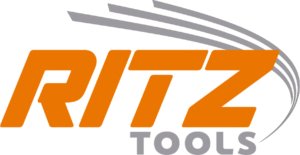
Electricity is an indispensable part of our lives, powering our homes, businesses, and industries. Behind the scenes, there are skilled professionals known as linemen who work tirelessly to ensure a continuous and reliable supply of electricity. Over the years, the tools and equipment they use have undergone a remarkable transformation. In this blog post, we will take a journey through the evolution of lineman equipment, from its humble beginnings to the cutting-edge tools used by electrical professionals today.
From Humble Beginnings to Cutting-Edge Technology
The early days of lineman work were marked by simplicity. Linemen used basic tools like wooden poles, rope, and hooks to climb utility poles and perform necessary repairs. These tools got the job done but were far from efficient or safe. As the demand for electricity grew and technology advanced, so did the equipment used by linemen.
Safety First: Modern Lineman Gear
One of the most significant advancements in lineman equipment has been in the realm of safety. The importance of keeping linemen safe while they work high above the ground cannot be overstated. Today, linemen wear specialized gear designed to protect them from electric shock, falls, and other hazards.
Modern lineman gear includes flame-resistant clothing, insulated gloves, and high-voltage rubber boots. Harnesses and safety belts keep linemen securely attached to utility poles or structures, preventing falls. The introduction of arc flash protection gear has also been a game-changer, significantly reducing the risk of burns in the event of an electrical fault.
Enhancing Efficiency with Advanced Tools
In addition to safety improvements, lineman equipment has also evolved to enhance efficiency. Traditional hand tools like pliers and wrenches have been augmented with power tools such as hydraulic crimping tools and battery-powered drills. These tools help linemen complete tasks more quickly and with less physical exertion.
Telescopic hot sticks have become standard equipment, allowing linemen to work on live electrical lines from a safe distance. Additionally, specialized diagnostic tools like thermal imaging cameras help identify issues in electrical systems before they become major problems, reducing downtime and maintenance costs.
The Role of Technology in Lineman Equipment
The integration of technology into lineman equipment has been a transformative development. GPS technology is now commonly used to locate and map electrical infrastructure, making it easier for linemen to find and address issues efficiently. Mobile apps and digital communication devices enable real-time collaboration and information sharing among linemen, improving overall productivity.
Drones have also found their way into the lineman’s toolkit. These unmanned aerial vehicles can inspect power lines and transmission towers in remote or hazardous areas, providing a cost-effective and safe alternative to traditional inspection methods.
Sustainability and Future Trends
As the world becomes more environmentally conscious, the electrical industry is also focusing on sustainability. Lineman equipment is following suit with the adoption of greener practices. For example, some linemen are using electric vehicles (EVs) for transportation to job sites, reducing their carbon footprint.
Furthermore, there is a growing trend towards using biodegradable or recyclable materials in the manufacturing of lineman gear. This not only reduces waste but also aligns with the industry’s commitment to sustainability.
In conclusion, the evolution of lineman equipment has been driven by a combination of safety, efficiency, technology, and sustainability. Today’s linemen are equipped with cutting-edge tools that make their work safer, more efficient, and environmentally responsible. As the electrical industry continues to evolve, we can expect even more exciting developments in lineman equipment in the years to come. These innovations will not only benefit linemen but also ensure a more reliable and sustainable supply of electricity for all of us.
1. What are the essential lineman tools for electrical work?
Answer: Essential lineman tools for electrical work include items like lineman’s pliers, screwdrivers, wire strippers, voltage testers, safety gear (such as insulated gloves and flame-resistant clothing), bucket trucks, and various specialized tools like hot sticks and hydraulic crimping tools. These tools help linemen safely install, maintain, and repair electrical systems.
2. How has technology improved lineman equipment?
Answer: Technology has significantly improved lineman equipment by introducing innovations such as GPS for locating electrical infrastructure, thermal imaging cameras for detecting faults, drones for inspections, and digital communication devices for real-time collaboration. These advancements enhance safety, efficiency, and productivity in the electrical industry.
3. What safety gear do linemen use to protect themselves from electrical hazards?
Answer: Linemen use a range of safety gear to protect themselves from electrical hazards, including flame-resistant clothing, insulated rubber gloves, high-voltage rubber boots, safety harnesses, safety belts, and arc flash protection gear. These items are designed to minimize the risk of electric shock, burns, and falls while working on electrical systems.
4. How do linemen stay safe when working on live electrical lines?
Answer: Linemen stay safe when working on live electrical lines by using specialized tools like insulated hot sticks and gloves that provide protection against electric shock. They also follow strict safety protocols, maintain a safe working distance, and use personal protective equipment (PPE) designed for live-line work. Additionally, they may employ live-line maintenance techniques to ensure safety.
5. Are there environmentally friendly lineman tools and equipment available?
Answer: Yes, there are environmentally friendly lineman tools and equipment available. Some manufacturers, like Ritz Tools, have started using biodegradable or recyclable materials in the production of lineman gear to reduce environmental impact. Additionally, the adoption of electric vehicles (EVs) by linemen for transportation to job sites is another example of a sustainable practice in the industry.


